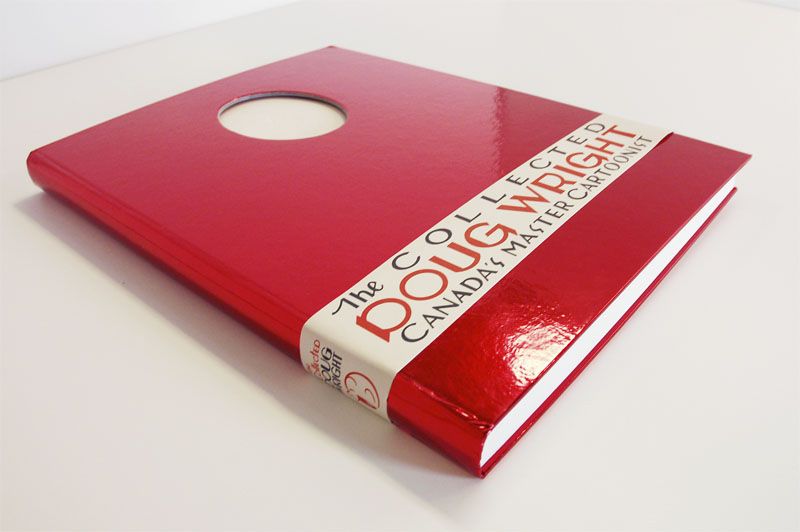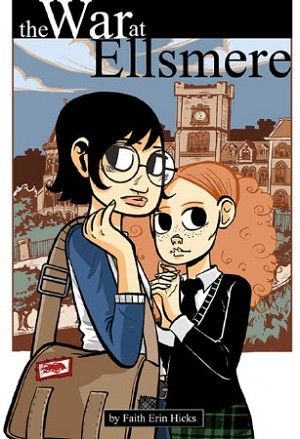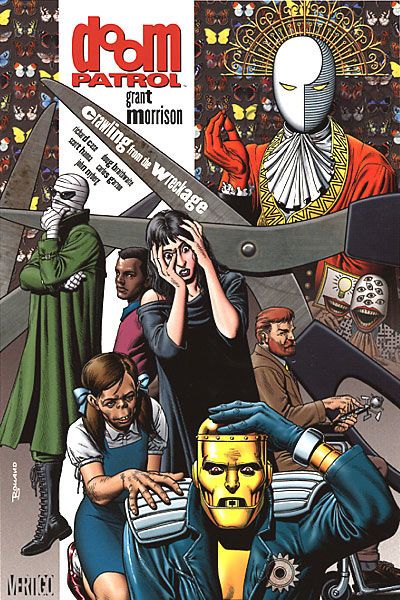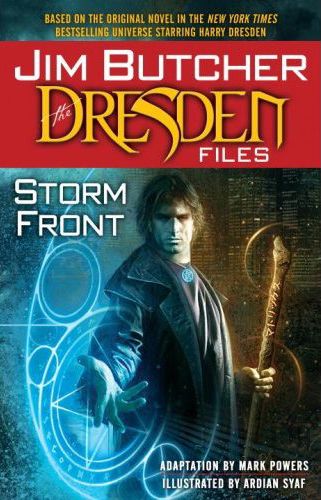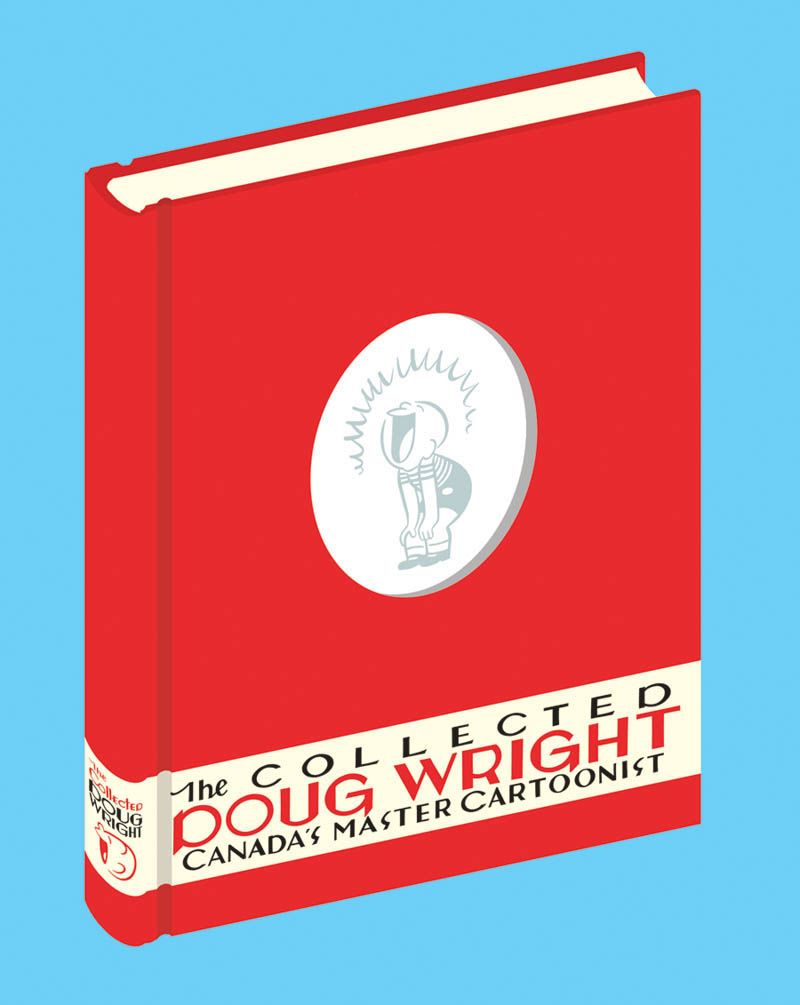Welcome to What Are You Reading. Our special guest this week is PictureBox publisher, Art Out of Time author and all-around top dog Dan Nadel.
Remember, we want to know what you're reading as well, so feel free to share what comics you've been enjoying (or haven't as the case may be) in the comments section.
And now, here what we're reading ...
Tim O'Shea: Last week, I mentioned Faith Erin Hicks' War at Ellsmere. Having finished it, I heartily recommend picking up this book. What appeals to me most about this private girls school tale featuring the haves and have nots, is the story strives to avoid afterschool special cliches. While I wish the angle of Jun's loss had been more fully explored (in terms of flashbacks maybe), what really pleased me was the evolution of Cassie's character growth. As time permits in the coming weeks, I may check out Hicks' webcomics work, such as Ice.
Grant Morrison's work for DC the past few years has been a great deal of hit and miss for me (mostly miss). Before you jump all over me, realize his Doom Patrol and Animal Man wor both reside on my short list of favorite comic runs. I'm not a full-time Morrison hater. So, I was pleasantly surprised to run across Morrison's collaboration with Philip Bond on 2005's Vimanarama for Vertigo. Away from complicated continuity and Morrison's multi-tiered, subtextual happy world building (yea I am just throwing buzzwords together), tells a love story between Ali and Sofia (OK with a few demi-gods and mythology elements, admittedly). A trade paperback edition collects the three-issue miniseries and made me appreciate Bond's art skills for the first time.
On the music front, I picked up Aqualung's 2008 release, Words & Music. Frontman
Matt Hales' keyboard work reminds me of Garth Hudson at times. Speaking of Hudson, I was pleased to see him pop up on Neko Case's latest release, Middle Cyclone -- a must by for the piano orchestra that appears on the CD.
Tom Bondurant: This week I read just about all of Grant Morrison and Richard Case's run on Doom Patrol (issues 19-63, spread over a half-dozen paperbacks). I say "just about" because I am still kicking myself for not buying the Flex Mentallo miniseries when it originally appeared, and I have yet to read the Doom Force parody.
Anyway, there's probably not much I could add to all the commentary this run has accumulated since its start almost twenty years ago. I've read these issues before, a few times each, and every time I seem to pick up something different. This time I appear to have blazed through the collections, but I did notice how much Morrison deals with the concepts of story, creativity, and reality. Such a departure for Morrison, I know; but I hadn't really associated those themes with this series. (I am slow.) Nevertheless, characters routinely question, and/or change, the nature of their own reality, and sometimes everyone else's. Furthermore, each of the main characters has a unique perspective on existence: Cliff Steele is the mind/body divide personified; Rebis is disconnected from hir human sides; and Crazy Jane's viewpoint changes as her personalities do. The last issue even suggests that it's all been a figment of one character's imagination; but I prefer to think otherwise. Like I said, I don't have much useful to add.
Still, there's a lot of great stuff in these issues, most of it brought to life by the distinctive pencils of Richard Case. I've seen Case on other things, but I don't think I've ever seen as much vitality in his work as I did here. His compositions and expressive figures give these characters an energy which other artists approach, but never quite capture. I sound like I'm trying to sell people on this series, and I'm sure I don't -- but this run of Doom Patrol never fails to grab me, just like it did twenty years ago. It may be the first superhero serial I read which ended on its creators' own terms. Accordingly, while I'd love to check in with Cliff, Jane, Rebis, Dorothy, and Danny, I'm not particularly eager to. Morrison and Case ended their run on an ideal note, and one which doesn't invite further scrutiny.
Now for a complete change of pace: it's not really comics, but I finally got around to watching those DVDs of the 1990-91 Flash TV series. Since it followed the first Tim Burton Batman movie, the sets are all "Gothamized" and the Flash suit (designed by Dave Stevens) has built-in muscles. Danny Elfman wrote the theme music, and Shirley
Walker (who went on to score various DC cartoons) wrote much of the rest. The first episode tries hard, but ultimately it's MST3K-worthy. Not helping in this respect is the villain's moll, played by an actress who had been an over-eager engineer on "Star Trek: The Next Generation." I kept thinking, "Ensign Gomez, no!" The second episode is better, especially at the end, when the villain (named "Tanner") turns out to be a parody of the Bill Bixby/Lou Ferrigno Hulk, right down to the glowing-eyed transformation scene. The third episode, which I just finished watching, is a definite improvement on
both, probably because it was written by story editors Howard Chaykin and John Francis Moore. Alas, not even they can save the cast from early '90s fashion -- mock turtlenecks and buttoned-up collars everywhere!
Chris Mautner: I haven't had the chance to read much at all this week surprisingly enough. What little time I had was mostly spent perusing the lastest issues of Rolling Stone and The New Yorker (which, by the way, has a cool Joost Swarte illustration).
I did, however manage to speed through the latest onslaught in the Dabel Brothers' ongoing deal with Del Rey, Jim Butcher's The Dresden Files: Storm Front Vol 1: The Gathering Storm, adapted by Mark Powers and Ardian Syaf. It's pretty awful, or at least so far apart from what interests me as a reader that I really don't have any way of interacting with or talking about it without seeming nasty. It's like a graphic novel made explicitly for my evil twin.
I also thumbed through Yokai Doctor, a new Del Rey manga (there they are again) about a nerdy high school boy who ministers to ailing monsters and spirits. He finds a willing helpful assistant in a cute female student. It's all pretty much rote, but relatively inoffensive and occasionally amusing.
Matt Maxwell: AGENTS OF ATLAS #4
My love for this comic is unreasoning. I can no more explain it than I can explain why the sun shines or gravity slows time. It's filled with misfits who are okay with their misfit status. It fits within current crossovers while gently making fun of them. It understands that its purpose is to entertain and that it'll never be featured on the national media. And you know what? That's okay.
I re-read this last week. It's hard to believe that this is even by the same author that wrote FINAL CRISIS. ALL-STAR SUPERMAN is perfectly concise, the essence of the character divided into perfect moments that lock together and make one of the best reads of the last several years, superhero comic or not. It's hard for me not to tear up at chapter 10's heart and purity. The team at work understands what makes Superman tick, what makes him a compelling character even when he can take down most threats with less effort than it takes an ordinary human to lift a phone book. Hint: super-strength has little to do with it.
Odd that I'd read this the same week I read ALL-STAR SUPERMAN. I know that the names of the authors are the same, but these books couldn't be more different. And no, I didn't really care for it. But I was hoping that this chapter would illuminate a little light on Morrison's take on FINAL CRISIS. It didn't. My opinion of the crossover remains fundamentally unchanged.
There's some nice moments in this book, but I find that there's no way on earth that it could live up to the praise heaped upon it from the likes of Clive Barker and Alan Moore. It's an intriguing story of New England and familial obligation, but the comic script comes across as thin and feels like it would've been better served in a prose format where the story would have had time to breathe and the setting would have really been able to take the place of a major character.
Just started reading this. Read precisely as much as I'd read in monthlies (that being the first chapter.) More on this one later.
Finished my reading of the collection of Kirby's run on the book. There's plenty of interesting visuals, but the stories are fairly perfunctory and there's not much sense of the characters, particularly when you compare to contemporary works like KAMANDI and THE FOURTH WORLD. But, this being Kirby, there's plenty of engaging design and dynamic action to keep me happy.
Dan Nadel: Sometimes I enjoy reading about comics more than I like reading comics. Happily, I have the best of both worlds with The Collected Doug Wright Volume One. I wasn't at all familiar with Wright's work before the lead-up to this book. Seth designed and edited this massive book, which is the first of a pair to cover the work of Wright, who was a Schulz/Ketchum-esque cartoonist chronicler of mid-century Canada. Brad Mackay contributed an excellent essay and Seth's editing, design and book concept are all impeccable. I love the "subjectivity" of seeing Wright's work framed by another master cartoonist. Like a great historian/curator should, Seth expertly frames Wright's ouvre so that I'm able to pass into the work through his eyes and then explore it for myself. So, I get the unique pleasure of seeing what Seth sees in the work, and then, expanding my knowledge as I read, understanding why it's worthy within my own pantheon of cartoonists.
Original art is shown large and as documents, the context of Canadian comic strips is amply explained in prose and visuals, and, of course, there are the comic strips themselves. What a revelation! Wright was both an incisive, masterful draftsman of the 1950s crisp-line variety, but also a wonderful observer of modern life. His characters act human and have an internal life to them that I find compelling. Also, he's a precise cartoonist -- clothes, landscapes, cars, houses, rooms are all individualized and keenly observed. In his ongoing family comic strip "Nipper" I feel like I discovered a whole new cartoon world to visit. The parents are suitably exasperated, loving, patient, hard working and the kid(s) are full of personality and, particularly as the strip goes on, imbued with a warmth I rarely see in comics. From a U.S. point of view, I also get to have a peek at Canadian life, which I frankly know little about.
All in all a great cultural experience. The other part of this story is that Seth really has become one of our finest comics historians. I continually refer to his wonderful volume Forty Cartoon Books of Interest and always look forward to seeing what he's discovering. And kudos to my pals at D&Q for making such a wonderful book. Anyhow, I'm going back to reading Nipper on this holiday weekend, before leaving snowy Canada to head off to the beach tomorrow.

